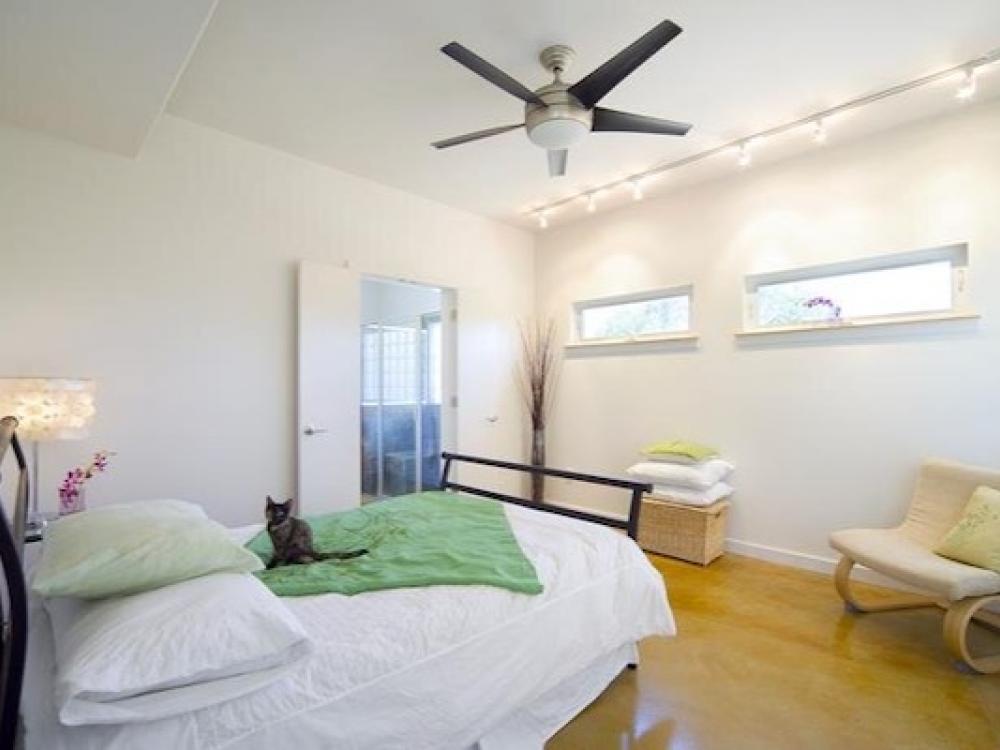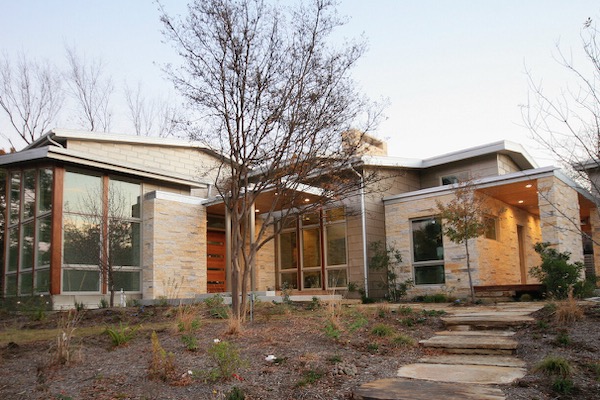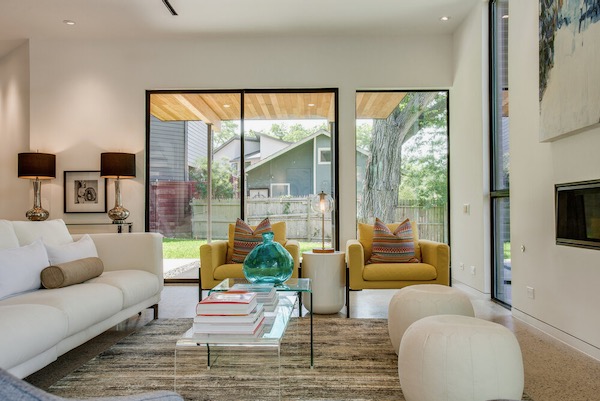
Dallas architect says maximizing light and views of nature can offset seasonal affective disorder. Photos courtesy of GGO Architects.
March 3, 2021
Seasonal affective disorder, aka SAD, is a type of depression, with up to 3 million cases reported each year. A reduced level of sunlight in fall and winter is suspected to cause winter-onset SAD, according to the Mayo Clinic.
And it’s not just something that affects people in rain-soaked regions like the Pacific Northwest: SAD impacts humans of all ages, all backgrounds, and all around the globe.
But there are ways to design your home that can help to offset the effects of SAD and support mental health, so that the symptoms aren’t such a burden to those who experience this debilitating disorder.
LONG TERM EFFECTS OF HOME DESIGN ON MENTAL HEALTH
Think about today’s average human and how they spend their time.
Now think about how average humans spent their time a little over a century ago.
If you look at what we were doing 150 years ago, we spent 90 percent of our time outdoors. Our modern lives look much different than the lives of those in past generations.
Even before stay-at-home orders were put in place because of today’s COVID pandemic, studies show that people have been spending most of their time inside: 87 percent of that time is spent inside buildings, cars or homes.
While this might now be the new normal, it has a significant impact on your mental and physical health. Aside from allergens and indoor air pollutants, a lack of sunlight and fresh air has an adverse effect on human beings.
 Views of trees and plants are reported to improve learning, offer healing and enhance our mental, cognitive and physical health. Residence designed by GGO Architects.
Views of trees and plants are reported to improve learning, offer healing and enhance our mental, cognitive and physical health. Residence designed by GGO Architects.
SOLUTIONS TO SAD
“If you're like most people with SAD, your symptoms start in the fall and continue into the winter months, sapping your energy and making you feel moody. Less often, SAD causes depression in the spring or early summer,” according to the Mayo Clinic.
Research has shown, however, that light therapy treatment can be highly effective.
“It generally starts working in a few days to a few weeks and causes few side effects. Research on light therapy is limited, but it appears to be effective for most people in relieving SAD symptoms,” according to reports from Mayo.
What we’ve also discovered is how your home design can support your mental and physical health.
 High windows allow daylight to penetrate deeper into the room. Residence designed by GGO Architects.
High windows allow daylight to penetrate deeper into the room. Residence designed by GGO Architects.
HEALTHY HOME DESIGN TIPS
Optimizing your home for occupant health involves a few different passive design strategies.
If you’re designing a new home, there are a few ways to approach the design so that it allows for an ample amount of daylight.
Orientation. Consider the orientation of your home so that you’re able to “collect” sunlight. “Typically, windows or other devices that collect solar energy should face within 30 degrees of true south and should not be shaded during the heating season by other buildings or trees from 9 a.m. to 3 p.m. each day,” according to the Department of Energy.
Maximize north and south exposures, and minimize east and west exposures.
“A floor depth of no more than 60 feet from south to north has been shown to be viable for daylighting,” according to the Whole Building Design Guide.
Windows on the World. Wondering about your windows? Those can be optimized for daylight, as well, by installing a high-performance window with low-emissivity and high visible light transmittance.
Think about your window placement, as well.
“As a general rule, the higher the window head height, the deeper into the space the daylight can penetrate. Therefore, good daylighting penetration practice dictates that the window should ideally be composed of two discrete components: a daylight window and a view window,” according to WBDG.
“As a general rule, the higher the window head height, the deeper into the space the daylight can penetrate. Therefore, good daylighting penetration practice dictates that the window should ideally be composed of two discrete components: a daylight window and a view window,” according to WBDG.
Increase Rooms with a View. Views to nature are also very important. Biophilic studies have confirmed our firm has known for over 50 years — visual access to nature, trees and plants improve learning, offer healing, and enhance our mental, cognitive and physical health.
 Consider installing new windows or skylights on an existing home to maximize light transmittance. Residence designed by GGO Architects.
Consider installing new windows or skylights on an existing home to maximize light transmittance. Residence designed by GGO Architects.
REVAMPING YOUR HOME
Let’s say that you’re not designing a new home, however, but you still want to make the most of your home’s layout so that it allows for optimal daylight. You can look into installing new windows with a high-quality glazing that will allow for ample light transmittance.
Homeowners might also add skylights to the home to help with daylighting, and can choose from a passive or active skylighting system. A passive skylight design allows daylight to penetrate the roof of the home, while an active skylighting system uses mirrors to collect sunlight and transfer rays directly into the home.
RELATED ARTICLES
Dallas shopping center parking lot turned into park
Building a green city: Q&A with Dallas architect Gary Olp
Stay up to date on everything green in North Texas, including the latest news and events! Sign up for the weekly Green Source DFW Newsletter! Follow us on Facebook and Twitter. Also check out our new podcast The Texas Green Report, available on your favorite podcast app.









